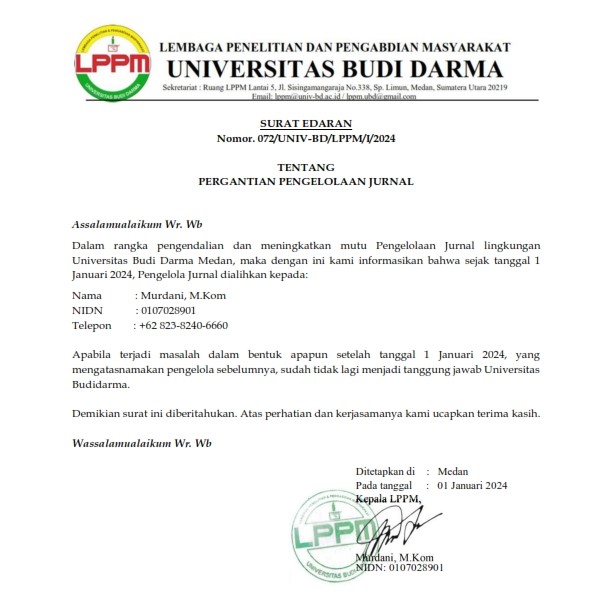Pengukuran Usability dan Respon Emosional Pengguna pada Aplikasi Cyber Counseling untuk Mengidentifikasi Masalah Interaksi
DOI:
https://doi.org/10.30865/jurikom.v9i6.5156Keywords:
Cyber Counseling, Self-assessment Manikin, System Usability Scale, Usability, User Emotional ResponseAbstract
The Cyber Counseling mobile application allows users with different backgrounds to visit, so evaluating the application's user interface is necessary. Usability has attributes to determine the user interface that users can use easily to achieve a goal. Emotions are subjective and conscious events illustrated primarily through psychophysiological expressions and biological reactions. Moreover, emotion is a complex feeling that affects the user's performance. In this study, usability testing uses a System Usability Scale questionnaire, and emotional responses will be measured by measuring affective reactions using the Self-assessment Manikin questionnaire. The results of usability testing using the System Usability Scale questionnaire show that the perspective of test participants about the Cyber Counseling mobile application is to have acceptability ranges in the acceptable category, have a grade scale with category C, and have an adjective rating in the good category. The results of measuring emotional responses using the Self-assessment Manikin questionnaire on the pleasure indicator have a happy emotional response, the arousal indicator has an enthusiastic emotional response, and the dominance indicator has an emotional response capable of operating the Cyber Counseling mobile application.This research has a contribution that by combining the usability method and measuring the user's emotional response, it not only provides information on the ease of using the application but also provides information about the affective reaction of the user when using the applicationReferences
R. Hariko, “Landasan Filosofis Keterampilan Komunikasi Konseling,†Jurnal Kajian Bimbingan dan Konseling, vol. 2, no. 2, 2017, doi: 10.17977/um001v2i22017p041.
D. Sasongko, A. L. A. Haq, and M. M. Sangiba, “Prototype Aplikasi Cyber Counseling Berbasis Mobile,†Journal of Information System Research (JOSH), vol. 3, no. 1, pp. 33–38, 2021.
M. M. Sangiba, D. Sasongko, P. Hendradi, and A. L. A. Haq, “Aplikasi Cyber Counseling Sebagai Solusi Pelayanan Konseling Online Berbasis Android,†JURIKOM (Jurnal Riset Komputer), vol. 9, no. 3, pp. 582–590, 2022.
M. P. Sari and H. Herdi, “Cyber Counseling : Solusi Konseling di Masa Pandemi,†Jurnal Paedagogy, vol. 8, no. 4, 2021, doi: 10.33394/jp.v8i4.3949.
D. Sasongko, “Desain antarmuka pengguna (user interface),†in Rekayasa Perangkat Lunak, D. Gustian, Ed. Bandung: Penerbit Media Sains, 2022, pp. 185–202.
A. K. Trukenbrod, N. Backhaus, and R. Thomaschke, “Measuring subjectively experienced time in usability and user experience testing scenarios,†International Journal of Human Computer Studies, vol. 138, 2020, doi: 10.1016/j.ijhcs.2020.102399.
S. Suyanto and U. Ependi, “Pengujian Usability dengan Teknik System Usability Scale pada Test Engine Try Out Sertifikasi,†MATRIK : Jurnal Manajemen, Teknik Informatika dan Rekayasa Komputer, vol. 19, no. 1, 2019, doi: 10.30812/matrik.v19i1.503.
A. Y. Pangestu, R. Safe’i, A. Darmawan, and H. Kaskoyo, “Evaluasi Usability pada Web GIS Pemantauan Kesehatan Hutan Menggunakan Metode System Usability Scale (SUS),†MATRIK : Jurnal Manajemen, Teknik Informatika dan Rekayasa Komputer, vol. 20, no. 1, 2020, doi: 10.30812/matrik.v20i1.709.
D. Komalasari and M. Ulfa, “Pengujian Usability Heuristic Terhadap Perangkat Lunak Pembelajaran Matematika,†MATRIK : Jurnal Manajemen, Teknik Informatika dan Rekayasa Komputer, vol. 19, no. 2, 2020, doi: 10.30812/matrik.v19i2.687.
B. Geethanjali, K. Adalarasu, A. Hemapraba, S. P. Kumar, and R. Rajasekeran, “Emotion analysis using sam (Self-assessment manikin) scale.,†Biomedical Research (India), vol. 2017, no. Special Issue ComplexWorldofNeuroscience, 2017.
T. Xie, M. Cao, and Z. Pan, “Applying self-assessment manikin (sam) to evaluate the affective arousal effects of vr games,†in Proceedings of the 2020 3rd International Conference on Image and Graphics Processing, 2020, pp. 134–138.
T. Althobaiti, S. Katsigiannis, D. West, and N. Ramzan, “Examining Human-Horse Interaction by Means of Affect Recognition via Physiological Signals,†IEEE Access, vol. 7, 2019, doi: 10.1109/ACCESS.2019.2922037.
S. Volo, “The experience of emotion: Directions for tourism design,†Ann Tour Res, vol. 86, 2021, doi: 10.1016/j.annals.2020.103097.
M. Serpico, D. Rovai, K. Wilke, R. Lesniauskas, J. Garza, and A. Lammert, “Studying the emotional response to insects food products,†Foods, vol. 10, no. 10, 2021, doi: 10.3390/foods10102404.
E. Muslim, R. A. Lestari, A. I. Hazmy, and S. Alvina, “User interface evaluation of mobile application krl access using user experience approach,†in IOP Conference Series: Materials Science and Engineering, 2019, vol. 508, no. 1. doi: 10.1088/1757-899X/508/1/012110.
Y. Sari, N. Novitasari, and H. Pratiwi, “Evaluation of lambung mangkurat university student academic portal using user experience questionnaire (UEQ),†ILKOM Jurnal Ilmiah, vol. 13, no. 1, 2021, doi: 10.33096/ilkom.v13i1.787.45-50.
S. H. Bibi, R. M. Munaf, N. Z. Bawany, A. Shamim, and Z. Saleem, “Usability Evaluation of Islamic Learning Mobile Applications,†Elkawnie, vol. 6, no. 1, 2020, doi: 10.22373/ekw.v6i1.5920.
S. Porcu, S. Uhrig, J. N. Voigt-Antons, S. Moller, and L. Atzori, “Emotional impact of video quality: Self-assessment and facial expression recognition,†in 2019 11th International Conference on Quality of Multimedia Experience, QoMEX 2019, 2019. doi: 10.1109/QoMEX.2019.8743186.
F. Khozaei, M. Lesan, N. Ayub, and Q. Ul Islam, “Emotional evaluation of homelike residence halls using self-assessment manikins,†Iran University of Science & Technology, vol. 30, no. 1, pp. 20–29, 2020.
Z. Sharfina and H. B. Santoso, “An Indonesian adaptation of the System Usability Scale (SUS),†in 2016 International Conference on Advanced Computer Science and Information Systems, ICACSIS 2016, 2017. doi: 10.1109/ICACSIS.2016.7872776.
D. Pal and V. Vanijja, “Perceived usability evaluation of Microsoft Teams as an online learning platform during COVID-19 using system usability scale and technology acceptance model in India,†Child Youth Serv Rev, vol. 119, 2020, doi: 10.1016/j.childyouth.2020.105535.
P. Vlachogianni and N. Tselios, “Perceived usability evaluation of educational technology using the System Usability Scale (SUS): A systematic review,†Journal of Research on Technology in Education, 2021, doi: 10.1080/15391523.2020.1867938.
U. Ependi, F. Panjaitan, and H. Hutrianto, “System usability scale antarmuka palembang guide sebagai media pendukung asian games XVIII,†Journal of Information Systems Engineering and Business Intelligence, vol. 3, no. 2, pp. 80–86, 2017.
A. Saputra, “Penerapan Usability pada Aplikasi PENTAS Dengan Menggunakan Metode System Usability Scale (SUS),†JTIM : Jurnal Teknologi Informasi dan Multimedia, vol. 1, no. 3, 2019, doi: 10.35746/jtim.v1i3.50.
D. Sasongko, “Pengembangan Antarmuka Perpustakaan Digital Menggunakan Responsive Web Design Dengan Pendekatan User Experience (Studi Kasus Pada Perpustakaan Digital Universitas Surakarta),†Universitas Gadjah mada, Yogyakarta, 2016.
G. Iturregui-Gallardo and J. L. Méndez-Ulrich, “Towards the Creation of a Tactile Version of the Self-Assessment Manikin (T-SAM) for the Emotional Assessment of Visually Impaired People,†Intl J Disabil Dev Educ, vol. 67, no. 6, 2020, doi: 10.1080/1034912X.2019.1626007








